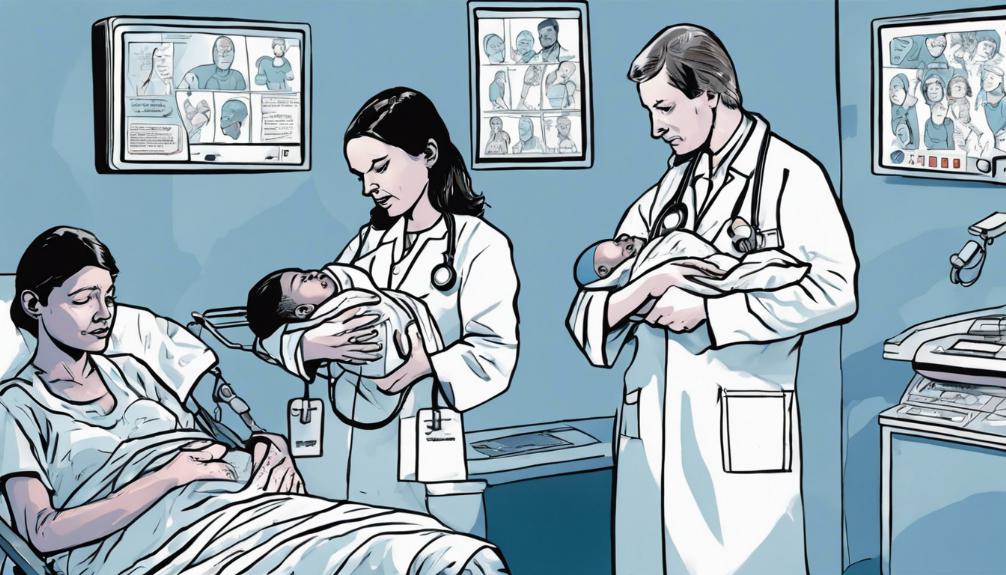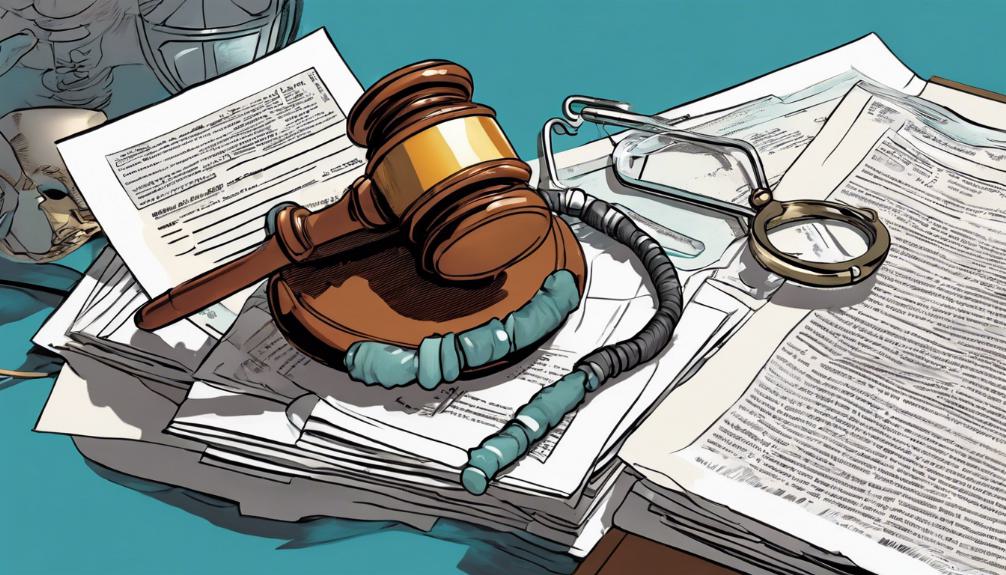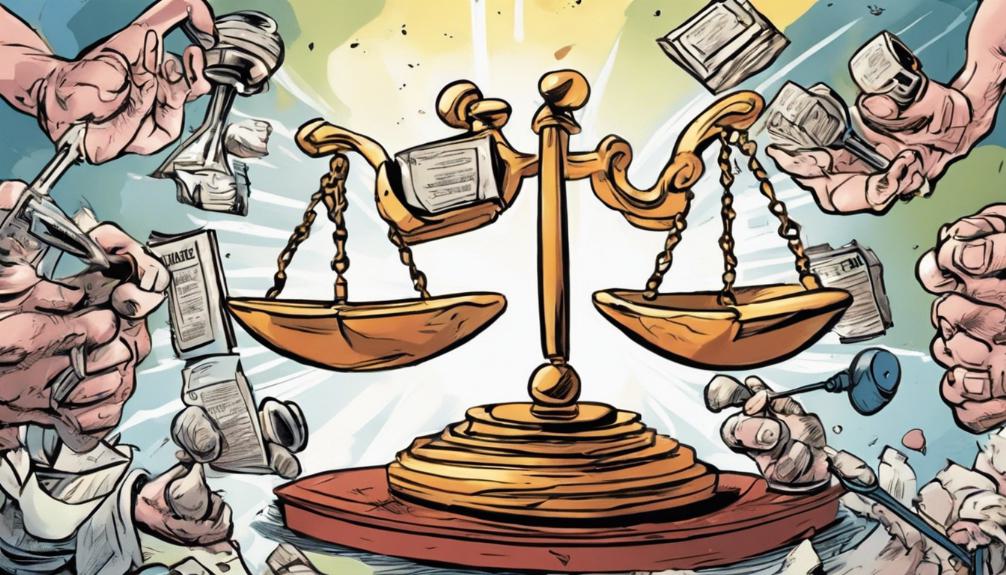Birth Asphyxia Lawsuit Case: Did Your Newborn Baby Suffer Permanent Injury Due to Birth Asphyxia?
The intricacies of birth asphyxia cases underscore the intersection between medical practice and legal advocacy, particularly when newborns suffer irreversible harm. As families grapple with the daunting reality of long-term care and the pursuit of justice, understanding the legal avenues available becomes paramount. This discussion aims to illuminate the complexities surrounding birth asphyxia lawsuit cases, exploring the criteria for legal claims, the process of establishing negligence, and the potential outcomes for affected families. It invites a thoughtful examination of how legal expertise can serve as a crucial ally in navigating the aftermath of birth asphyxia, setting the stage for a deeper exploration of this critical issue.

Understanding Birth Asphyxia
Birth asphyxia, a critical condition occurring during childbirth, involves a significant reduction in the supply of oxygen and nutrients to a fetus, hindering cellular function and potentially leading to severe, long-term health issues. This lack of essential life support disrupts the normal biological processes that are crucial for the development and survival of the infant. Without adequate oxygenation, cells cannot synthesize ATP, the energy currency of the cell, leading to cellular injury and, if prolonged, cell death. This can affect various organs but is particularly detrimental to the brain, which is highly sensitive to oxygen deprivation. The consequences of birth asphyxia range from mild, temporary conditions to severe, irreversible damage, including neurological and developmental disorders, highlighting the importance of immediate and effective medical intervention to mitigate the risks associated with this condition.
Causes and Risk Factors

Several factors, often interconnected, significantly increase the risk of birth asphyxia, including maternal health conditions and complications during childbirth. Maternal factors such as advanced age, hypertension, and infections can predispose a pregnancy to complications leading to asphyxia. Moreover, circumstances like premature birth and the presence of multiple births further elevate the risk. During delivery, prolonged labor, meconium-stained amniotic fluid, and umbilical cord problems can directly contribute to an oxygen deprivation scenario. These risk factors underscore the importance of comprehensive prenatal care and monitoring during childbirth to mitigate the chances of birth asphyxia. Understanding these risk factors is crucial for healthcare providers to implement preventive measures and for legal professionals in assessing birth asphyxia lawsuit cases.
Signs and Symptoms

Understanding the causes and risk factors for birth asphyxia equips us to recognize its early signs and symptoms, which are critical for timely intervention and treatment. Newborns suffering from birth asphyxia may exhibit a range of symptoms that necessitate immediate attention. These include but are not limited to, a weak or absent cry at birth, limpness or poor muscle tone, skin that appears blue or pale, difficulty breathing or absent breathing efforts, a low heart rate, and poor reflexes. Moreover, some babies might experience seizures within the first few days of life, indicating a severe level of distress. Being vigilant about these symptoms enables healthcare providers to initiate necessary interventions, potentially mitigating the risk of permanent injury.
Long-Term Effects

The long-term effects of birth asphyxia on a child's development and health can be profound and life-altering. Children who have suffered from birth asphyxia may experience a range of neurological and physical challenges, including cerebral palsy, developmental delays, and learning disabilities. These conditions often require long-term medical care, specialized therapies, and educational support to address their complex needs. The severity of the impact largely depends on the duration and extent of oxygen deprivation. Additionally, birth asphyxia can lead to more severe outcomes such as epilepsy, vision and hearing impairments, and behavioral issues, further complicating the child's ability to lead a normal life. Families facing these challenges may find themselves navigating a difficult path of ongoing care and adjustment.
Legal Grounds for Claims

Given the profound and life-altering effects of birth asphyxia on a child's development, families may seek legal recourse to address the negligence or malpractice that led to these injuries. Legal claims often hinge on proving that the healthcare providers failed to meet the standard of care expected during the birthing process. This can include failure to monitor fetal distress, delay in performing necessary interventions such as a cesarean section, or mishandling conditions leading to asphyxia. Establishing negligence requires demonstrating that the care provided fell below accepted medical practices, directly leading to the child's injuries. Families may also explore claims related to failure to diagnose or treat prenatal conditions contributing to asphyxia, emphasizing the critical role of timely and appropriate medical response in preventing such devastating outcomes.
Filing a Lawsuit

Initiating a lawsuit for birth asphyxia requires careful preparation and understanding of the legal process involved. Parents or guardians suspecting their newborn was a victim must first consult with a specialized attorney experienced in birth injury cases. This legal expert will evaluate the case's merits, considering medical records, the circumstances of the delivery, and potential deviations from standard care protocols. Gathering and preserving evidence is crucial, as is identifying all potential defendants, which may include hospitals, healthcare professionals, or other related parties. The attorney will then file a formal complaint in the appropriate court, marking the official start of the lawsuit. This step is pivotal in seeking justice and accountability for the harm caused to the newborn, underlining the importance of professional guidance throughout the process.
Potential Compensation

After filing a lawsuit for birth asphyxia, families may seek various forms of compensation to address the extensive damages incurred. This compensation can cover a wide range of needs, including medical expenses for ongoing and future care, which might encompass surgeries, therapies, and any specialized equipment required for the child's well-being. Additionally, families can pursue damages for pain and suffering, which recognize the emotional and physical distress suffered by the child and family members. In cases where birth asphyxia leads to long-term or permanent disability, compensation may also include funds for lost earning potential, considering the impact of the injury on the child's ability to work in the future. Each case is unique, and the specific compensation sought will depend on the circumstances and severity of the injuries suffered.
Choosing the Right Attorney

Selecting an experienced attorney is crucial for families navigating the complexities of a birth asphyxia lawsuit case. When choosing an attorney, families should seek individuals with a proven track record in handling birth injury cases, particularly those involving asphyxia. It's important to find a legal professional who not only understands the medical intricacies of birth asphyxia but also has a deep comprehension of the legal framework surrounding such cases. This ensures the attorney can effectively advocate for the maximum compensation possible. Additionally, the right attorney should offer compassionate, personalized attention to the affected family, recognizing the emotional and financial toll such injuries can impose. Finding an attorney with these qualifications can significantly impact the outcome of the lawsuit, offering families a chance at justice and financial relief.
Case Study Examples

Having explored the importance of choosing the right attorney for birth asphyxia lawsuit cases, we now turn our attention to case study examples that illustrate the complexities and outcomes of such legal battles. One notable case involved a family whose newborn suffered severe brain damage due to delayed delivery, leading to a substantial settlement that covered lifelong care costs. Another case saw a jury award millions in damages after establishing that medical staff failed to monitor fetal distress adequately, resulting in permanent neurological injuries. These cases underscore the critical nature of timely and appropriate medical interventions during childbirth and highlight the potential for significant compensation through legal action. They serve as poignant reminders of the stakes involved in birth asphyxia lawsuits.
Prevention and Care

Prevention and care strategies for birth asphyxia involve early detection of risk factors and meticulous monitoring during labor and delivery. Healthcare professionals can significantly reduce the risk of birth asphyxia by identifying pregnant women who are at high risk due to factors such as maternal age, hypertension, and infections. Implementing appropriate interventions, including fetal heart rate monitoring and timely delivery, plays a crucial role. Additionally, preparedness to initiate neonatal resuscitation immediately after birth if necessary is vital. Training for healthcare providers on the latest guidelines and techniques for managing labor and delivery complications is essential to prevent asphyxia and minimize potential injuries. By focusing on these preventive measures, healthcare teams can improve outcomes for newborns, reducing the incidence and severity of birth asphyxia-related injuries.
Support Resources

Families affected by birth asphyxia can tap into a variety of support resources designed to assist them through their challenging journey. These resources include specialized healthcare professionals, such as pediatric neurologists and physical therapists, who focus on managing and improving the condition of the child. Additionally, legal support is crucial for navigating the complexities of lawsuit cases related to birth asphyxia. Support groups and online forums also provide a platform for families to share experiences, find emotional support, and gain practical advice from others facing similar situations. Furthermore, non-profit organizations dedicated to birth injury awareness offer guidance, educational material, and financial assistance programs to help families cope with medical expenses and adaptive equipment needs, ensuring a supportive network is within reach for those affected.
Frequently Asked Questions
How Does the Legal Process for a Birth Asphyxia Lawsuit Differ in Various States or Countries?
The legal process for a birth asphyxia lawsuit may vary significantly across different states or countries due to variations in legal systems, statutes of limitations, and specific procedural requirements. In some jurisdictions, the process might involve mandatory mediation or arbitration before proceeding to trial, while others may have direct pathways to litigation. Additionally, the evidentiary standards and the qualifications required for expert witnesses can differ, affecting the strategy and outcome of such cases.
Are There Specific Statutes of Limitations for Filing a Birth Asphyxia Lawsuit, and How Can Parents Determine the Timeline Applicable to Their Case?
Statutes of limitations for filing a lawsuit vary significantly across jurisdictions, impacting the timeframe within which parents must initiate legal action for birth asphyxia cases. It's essential for parents to consult with a legal professional who specializes in birth injury cases to understand the specific limitations applicable to their situation. This professional guidance ensures parents are informed of their rights and the deadlines by which they must file a claim to seek compensation.
Can Parents Pursue a Birth Asphyxia Lawsuit if the Injury Was Identified Years After the Birth, and How Is Causality Established in Such Cases?
Parents can pursue legal action for birth asphyxia injuries identified long after birth, although challenges may arise in establishing causality. The success of such lawsuits often depends on demonstrating a direct link between medical negligence at the time of birth and the resulting injuries. Legal expertise is crucial to navigate statutes of limitations and gather the necessary medical evidence to substantiate claims of malpractice and secure appropriate compensation for the affected family.
What Role Do Medical Experts Play in a Birth Asphyxia Lawsuit, and How Are They Selected?
In birth asphyxia lawsuits, medical experts are pivotal in establishing the link between medical practices and the resultant injuries. These professionals are selected based on their expertise in neonatology, obstetrics, and related fields, ensuring they possess the necessary knowledge to assess the intricacies of the case. Their role encompasses evaluating medical records, identifying deviations from standard care, and testifying on the potential impacts of asphyxia on the newborn's health.
How Does a Birth Asphyxia Lawsuit Impact the Medical Professionals Involved, and What Are the Potential Consequences for Their Careers?
A birth asphyxia lawsuit can significantly impact medical professionals involved, potentially affecting their careers. Legal proceedings may scrutinize the actions and decisions of healthcare providers, leading to reputational damage and professional sanctions. In severe cases, it could result in the loss of medical licenses or employment. Additionally, the emotional and psychological toll of being involved in a lawsuit may affect personal well-being and professional performance, further influencing their career trajectory.

This post has been generated by AI and was not reviewed by editors. This is Not legal advice. Please consult with an attorney.




